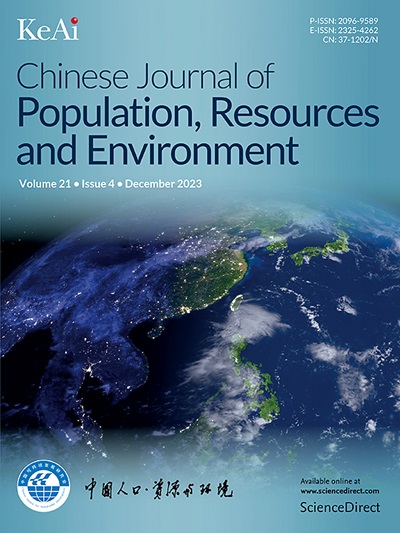New developments and future innovative opportunities for carbon sequestration in South Africa: A review
IF 4.8
4区 环境科学与生态学
Q2 ENVIRONMENTAL STUDIES
Chinese Journal of Population Resources and Environment
Pub Date : 2025-09-01
DOI:10.1016/j.cjpre.2025.07.008
引用次数: 0
Abstract
The South African government has proven its commitment to the reduction of anthropogenic carbon emissions by unveiling the carbon capture, utilization, and storage (CCUS) pilot demonstration research site on August 30, 2024. The CCUS approach is to form part of the Integrated Resource Plan as one of the critical aspects of the country’s energy mix. This puts CCUS at the forefront of the adoption of clean energy initiatives. This paper reviews the progress on CCUS initiatives in South Africa since the publication of the 2010 technical report on the geological storage of carbon dioxide (CO2) with a focus on onshore sequestration. The focus is on the current status, future opportunities, and the possibility of developing numerical models and simulations of various South African coal ranks to simulate CO2 sequestration potential with reference to the related literature. The paper also delves into the ongoing Leandra pilot CCS demonstration project in Mpumalanga Province, the status of the identified unmineable coalfields available for CCS in South Africa, collaborations, and future prospects for CCS in the country. The purpose is to contribute to advancing the local CCS technology and mitigating anthropogenic CO2 emissions. Through this review paper, it is established that promoting the advancement and implementation of CCS in South Africa requires continuous advanced research activities from scholars and private and government institutions because of the critical need to understand the fluid induced response of geological formations, especially coal formations, for the secure and effective application of this sequestration method.
南非碳封存的新发展和未来创新机会:综述
南非政府于2024年8月30日公布了碳捕集、利用和封存(CCUS)试点示范研究基地,证明了其减少人为碳排放的承诺。CCUS方法将作为国家能源结构的关键方面之一,成为综合资源计划的一部分。这使CCUS处于采用清洁能源倡议的最前沿。本文回顾了自2010年关于二氧化碳地质封存的技术报告发布以来,南非CCUS计划的进展,重点是陆上封存。重点是目前的状况,未来的机会,以及开发数值模型和模拟各种南非煤炭等级的可能性,以模拟二氧化碳封存潜力,参考相关文献。本文还深入探讨了南非姆普马兰加省正在进行的Leandra CCS试点示范项目、南非已确定的可用于CCS的不可开采煤田的现状、合作以及该国CCS的未来前景。其目的是促进当地CCS技术的发展和减少人为二氧化碳排放。通过这篇综述文章,我们认识到,为了安全有效地应用这种封存方法,迫切需要了解地质构造,特别是煤构造的流体诱导响应,因此,促进CCS在南非的发展和实施需要学者、私人和政府机构不断开展先进的研究活动。
本文章由计算机程序翻译,如有差异,请以英文原文为准。
求助全文
约1分钟内获得全文
求助全文
来源期刊

Chinese Journal of Population Resources and Environment
ENVIRONMENTAL STUDIES-
CiteScore
4.30
自引率
1.10%
发文量
791
审稿时长
79 days
期刊介绍:
The Chinese Journal of Population, Resources and Environment (CJPRE) is a peer-reviewed international academic journal that publishes original research in the fields of economic, population, resource, and environment studies as they relate to sustainable development. The journal aims to address and evaluate theoretical frameworks, capability building initiatives, strategic goals, ethical values, empirical research, methodologies, and techniques in the field. CJPRE began publication in 1992 and is sponsored by the Chinese Society for Sustainable Development (CSSD), the Research Center for Sustainable Development of Shandong Province, the Administrative Center for China's Agenda 21 (ACCA21), and Shandong Normal University. The Chinese title of the journal was inscribed by the former Chinese leader, Mr. Deng Xiaoping. Initially focused on China's advances in sustainable development, CJPRE now also highlights global developments from both developed and developing countries.
 求助内容:
求助内容: 应助结果提醒方式:
应助结果提醒方式:


